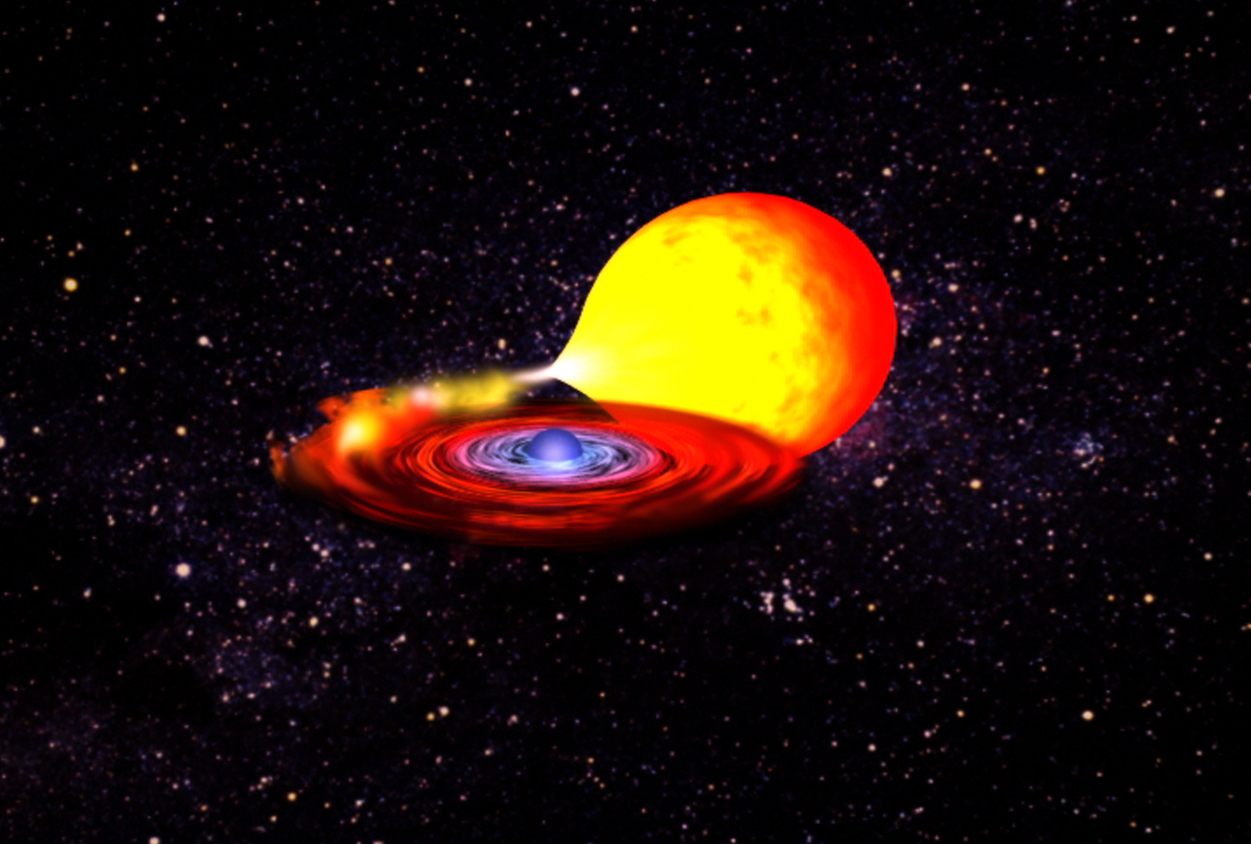
 (Credit: Dana Berry, NASA)
(Credit: Dana Berry, NASA)
The gas eventually spirals inward and arrives at the neutron star's surface, forming a layer several meters thick over the surface of the star. Eventually, when the temperature and pressure are high enough, unstable thermonuclear burning can be triggered. This results in an explosion that can be seen by X-ray telescopes; they typically reach peak luminosity in a second, and last for tens of seconds until all the nuclear fuel is burnt. Thermonuclear bursts can be used to study conditions at the surface of the star.
In my research I study what happens to the accretion disc during a burst. The intense radiation emitted at the stellar surface both pushes on the accretion disc from below, and drags on it against its direction of rotation. Both effects could temporarily change the rate at which gas is deposited onto the neutron star. Understanding the magnitude of such changes is critical, since we observe a spectrum that is the sum of contributions from the burst itself and from the accretion disc- this is called "persistent emission" because it is present before and after the burst. Correctly subtracting off the accretion component is necessary to obtain the true spectrum of the burst.
I used archival RXTE data to investigate persistent emission change in 1,709 individual burst events from 56 different neutron stars in the Galaxy. My approach is conceptually simple. I assumed that the shape of the persistent emission spectrum is constant but that its intensity can vary with time. Then I modelled the total spectrum from a burst as thermal emission, representing the luminous surface of the bursting star, plus the persistent emission times a variable factor. See my papers in my publications page for more information.
Currently I am running smoothed particle hydrodynamics simulations of an irradiated accretion disc to see what happens to the accretion rate during a burst. One disc simulation is shown below.
My PhD supervisors are Duncan Galloway and Daniel Price.
| Hauke Worpel | Monash Centre for Astrophysics (MoCA) |
| email: hauke.worpel@monash.edu | Monash University |
| ph: +61 3 9905 4470 | Victoria, 3800 |
| Australia | |
| My CV (pdf) |

